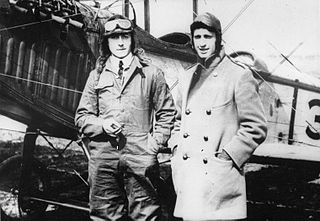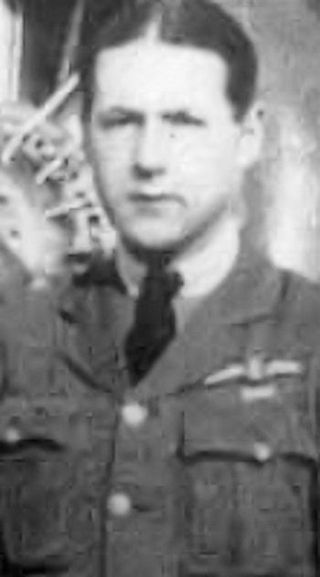Related Research Articles

Francis Granger Quigley, was a Canadian aviator and flying ace of the First World War, who was credited with 33 aerial victories. He was notable for scoring the majority of his victories against German fighter planes.
Captain Thomas Frederic Williams MC was a Canadian First World War flying ace, officially credited with 14 victories.

Air Vice Marshal George Roberts Howsam, CB, MC was a Canadian First World War flying ace, officially credited with 13 victories. Serving in the newly formed Royal Canadian Air Force in the inter-war years, Howsam served as the RCAF's Director of Training during World War II.

Captain Ernest Charles Hoy DFC was a Canadian First World War flying ace, officially credited with 13 victories. He later pioneered airmail flight over the Canadian Rockies.
Lieutenant Harold Byrn Hudson MC was a Canadian First World War flying ace, officially credited with 13 victories. As wingman to William George Barker, he scored a record five victories over observation balloons in a single day.
Captain Ronald McNeill Keirstead DSC was a Canadian First World War flying ace, officially credited with 13 victories.
Captain Hazel LeRoy Wallace DFC was a Canadian First World War flying ace, officially credited with 14 victories. His record shows him to have been a notable team player in squadron tactics.
Captain Robert Norwood Hall was a South African World War I flying ace credited with five aerial victories.
Lieutenant Harold Arthur Sydney Molyneux was a World War I flying ace credited with five aerial victories. During World War II, he returned to service in the Royal Canadian Air Force.
Lieutenant Alfred John Haines was a British World War I flying ace credited with six aerial victories.
Captain Thomas Sydney Sharpe was a British World War I flying ace credited with six aerial victories.
Captain Ronald Sykes (1899-1977) was a World War I flying ace credited with six aerial victories.
Brigadier Charles Gordon Ross was a career soldier who served in both the Royal Air Force and the South African Air Force. He was a quadruple ace, being credited with 20 victories during World War I.
Lieutenant D'Arcy Fowlis Hilton was a Canadian-born American World War I flying ace credited with eight aerial victories.
Lieutenant Claude Melnot Wilson DFC was a Canadian World War I flying ace credited with eight aerial victories.
Captain James Dennis Payne was a World War I flying ace credited with fourteen aerial victories.
Captain Frank Clifton Gorringe was a British World War I flying ace credited with 14 aerial victories.

Lieutenant Kenneth Russell Unger was an American World War I flying ace credited with fourteen aerial victories. His candidacy rejected by his own nation, Unger applied to the British Royal Flying Corps for military pilot training in June 1917. Once trained, he was assigned to the Royal Naval Air Service (RNAS). As the RNAS was merged into the Royal Air Force, Unger scored his aerial victories between 26 June and 1 November 1918. In later life, Unger remained involved in aviation and served again during World War II. He also joined the U.S. Navy Reserves, rising to the rank of rear admiral.
Captain Reginald Carey Brenton Brading was a British World War I flying ace credited with thirteen confirmed aerial victories.
Squadron Leader Walter Macfarlane Carlaw was a Scottish flying ace who served during World War I, and was credited with 12 confirmed aerial victories. He returned to RAF service during World War II.
References
- Above the Trenches: A Complete Record of the Fighter Aces and Units of the British Empire Air Forces 1915-1920. Christopher F. Shores, Norman L. R. Franks, Russell Guest. Grub Street, 1990. ISBN 0-948817-19-4, ISBN 978-0-948817-19-9.